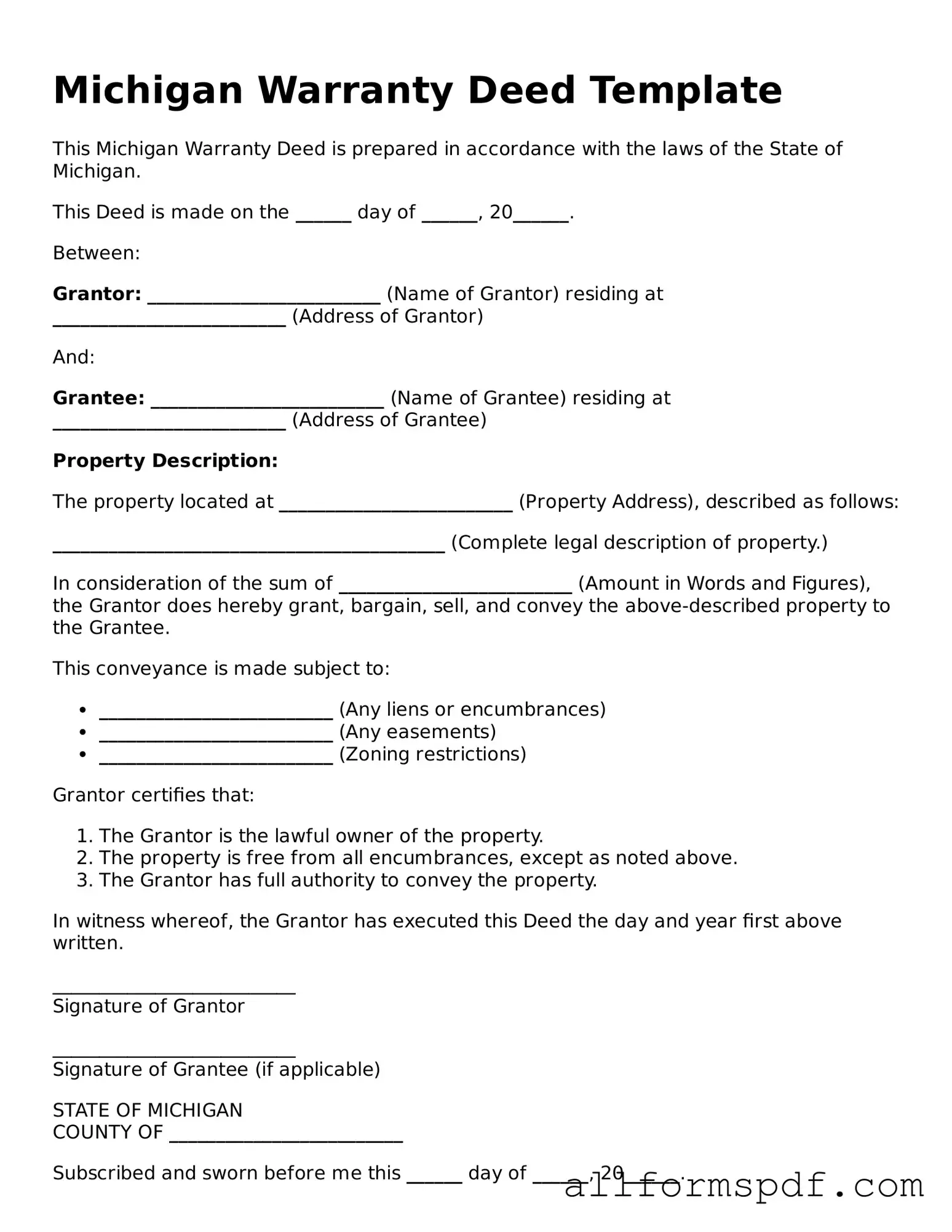Filling out a Michigan Deed form can seem straightforward, but many people make common mistakes that can lead to complications later. One frequent error is not including the correct names of the parties involved. It’s essential to ensure that the names match exactly with what is on legal documents. Any discrepancies can cause issues when the deed is recorded.
Another mistake is failing to provide a complete legal description of the property. A simple address is not enough. The legal description should include details like lot number, subdivision, or any other specific identifiers that clearly define the property boundaries. Omitting this information can lead to confusion or disputes about ownership.
Many people forget to sign the deed. This may seem obvious, but without a signature, the document is not valid. Additionally, if the deed is not notarized, it may not be accepted by the county register of deeds. Always ensure that a notary public witnesses the signing.
Some individuals overlook the importance of the date. Leaving the date blank can delay the recording process. It’s important to include the date when the deed is signed to establish the timeline of the transfer.
Another common issue is using the wrong type of deed. Michigan has different types of deeds, such as warranty deeds and quitclaim deeds. Each serves a different purpose. Understanding which one to use is crucial to ensure that the transfer of property rights is done correctly.
People often forget to check the property tax information. It’s vital to ensure that there are no outstanding taxes on the property before transferring ownership. If taxes are unpaid, the new owner could inherit the debt, leading to potential legal issues.
When filling out the form, some individuals neglect to include the consideration amount. This refers to the price paid for the property. Even if the property is a gift, it’s still important to indicate that on the deed. Failing to do so can raise questions about the transaction.
Another mistake is not providing contact information for the parties involved. Including phone numbers or addresses can help resolve any issues that may arise after the deed is filed. It’s a simple step that can save time and confusion later.
Some people also make the mistake of not checking for errors before submitting the deed. Typos or incorrect information can lead to delays in the recording process. Taking a moment to review the document can prevent unnecessary headaches.
Finally, many individuals do not keep a copy of the recorded deed. After filing, it’s wise to obtain a copy for personal records. This serves as proof of ownership and can be helpful in future transactions or legal matters.
